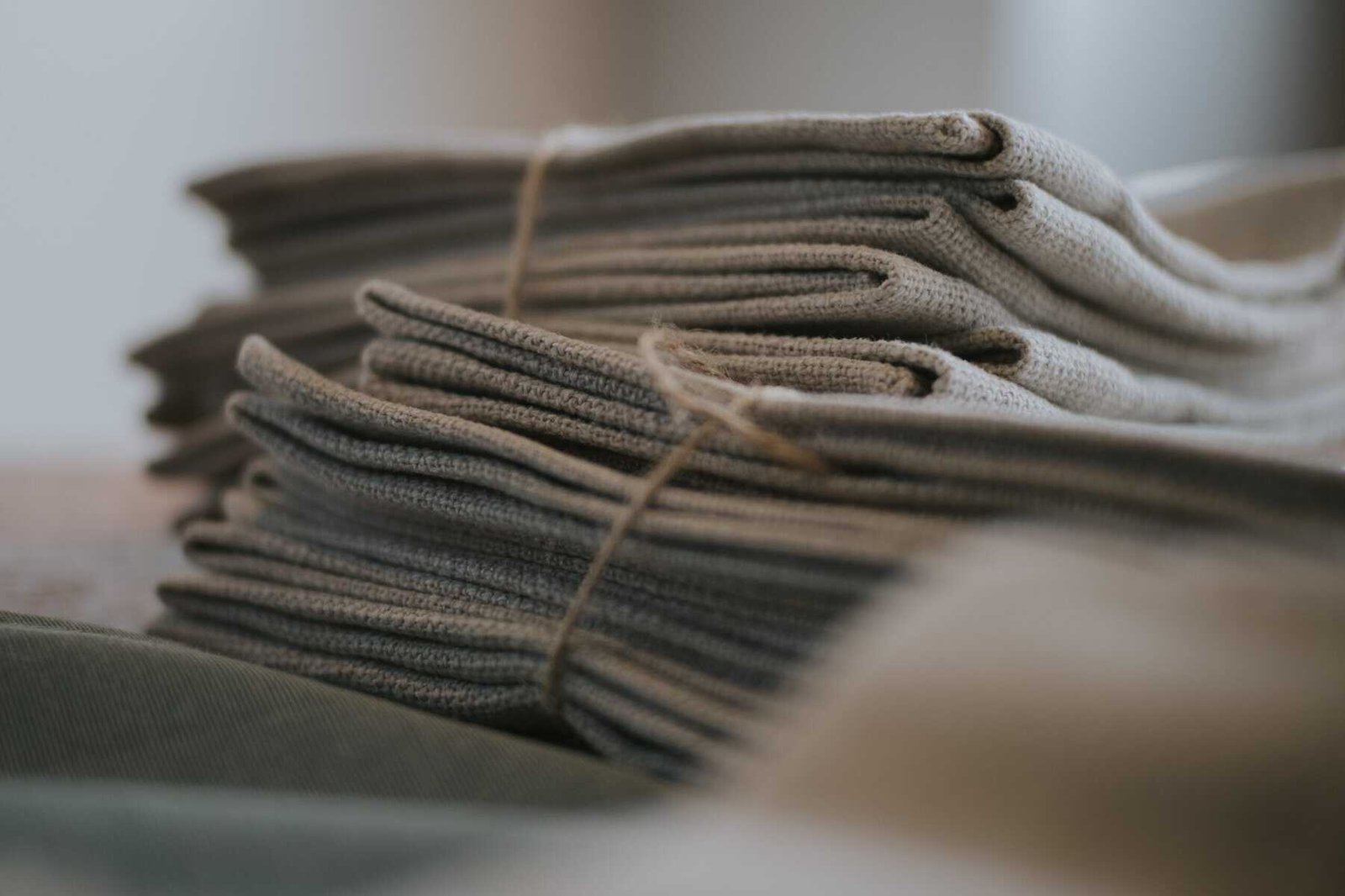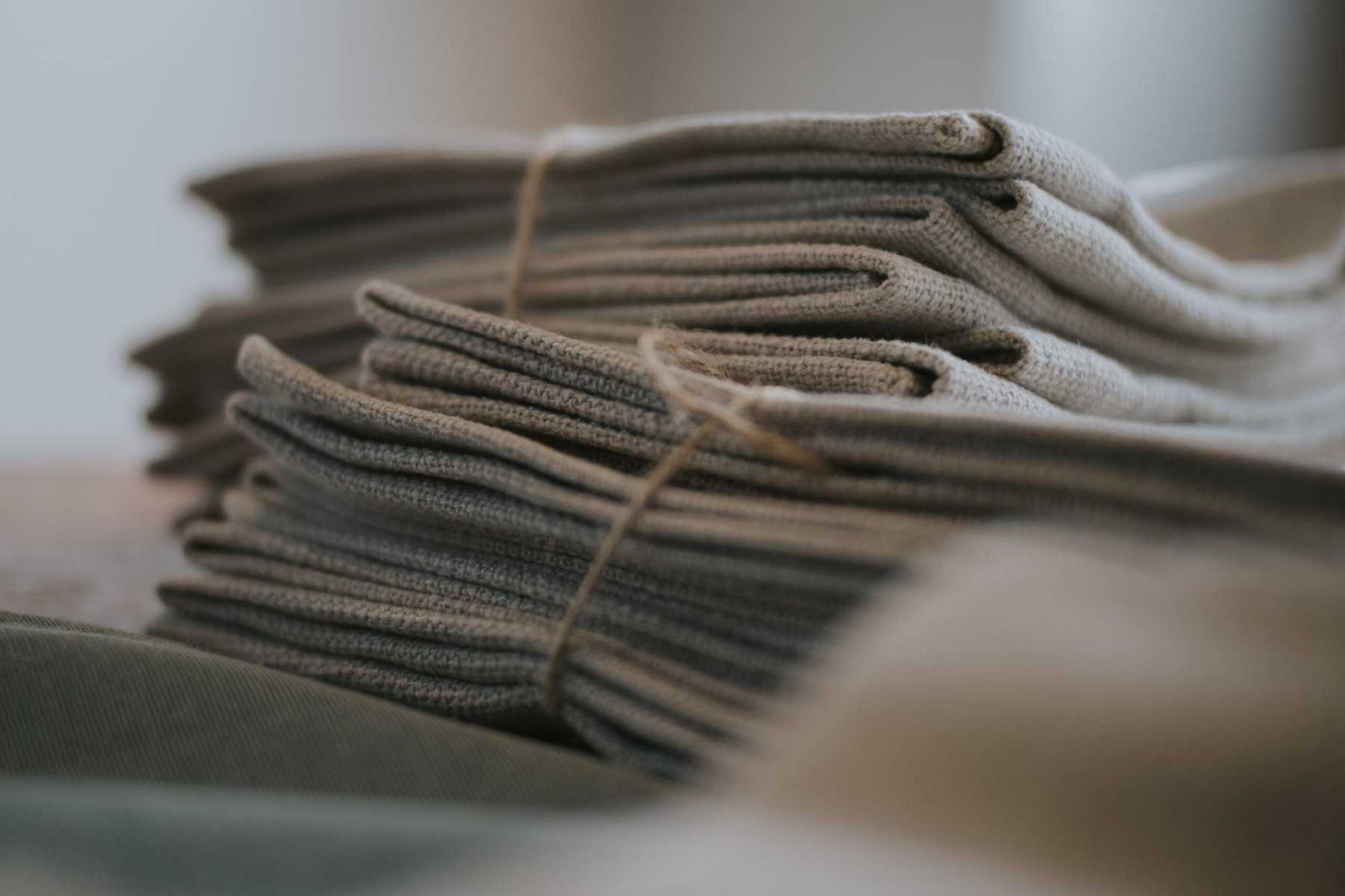Are you tired of dealing with frayed and deteriorating nets? Look no further, because in this article, we’ve got you covered with some handy tips to prevent net deterioration and fraying. Whether you’re a sports enthusiast looking after your goal net or someone with a fishing hobby, these simple yet effective tips will help you keep your nets in tip-top shape. Say goodbye to frustrating tears and unraveling threads, and say hello to a longer-lasting and more reliable net!

Understanding Net Deterioration
What causes net deterioration?
Net deterioration can occur due to various factors, such as exposure to harsh weather conditions, improper storage, lack of maintenance, and regular wear and tear. Over time, these factors can weaken the netting material, leading to fraying, tearing, or complete failure of the net.
Signs of net deterioration
It is essential to be vigilant and identify signs of net deterioration to address the issue promptly. Some common signs include fraying or unraveling threads, holes or tears in the net, weakened or stretched-out areas, and a generally worn-out appearance. If you notice any of these signs, it is crucial to take preventive measures to avoid further damage.
Importance of preventing net deterioration
Preventing net deterioration is crucial to maintain the safety and effectiveness of nets. Whether it’s a sports net, a safety net, or a fishnet, its integrity plays a significant role in its functionality. By addressing net deterioration, you ensure that the net continues to serve its intended purpose reliably, reducing the risk of accidents or failures.
Prevention Tips for Net Deterioration
Regular cleaning and maintenance
Regular cleaning and maintenance are vital to prevent the buildup of dirt, debris, and other contaminants that can degrade the netting material. Gently remove any dirt or debris using a soft-bristled brush or a damp cloth. Avoid using harsh chemicals or abrasive cleaning agents, as they can damage the net fibers.
Proper storage
Proper storage is essential to protect nets from unnecessary strain and damage. Avoid folding or stacking nets under heavy objects or in a way that puts excessive pressure on the netting material. Instead, roll or hang nets in a dry and cool environment to maintain their shape and prevent unnecessary stress.
Avoiding exposure to harsh weather conditions
Exposure to harsh weather conditions, such as direct sunlight, rain, or snow, can accelerate net deterioration. Whenever possible, take nets indoors during extreme weather events. If indoor storage is not feasible, consider using protective covers or tarps to shield the nets from direct exposure.
Using protective covers
Protective covers offer an added layer of defense against potential damage. Choose covers that are specifically designed for the type and size of net you are using. Ensure the covers fit snugly to provide optimal protection. Regularly inspect the covers for any signs of wear and tear, and replace them as needed to maintain the net’s integrity.
Inspecting for damage
Regular inspections are crucial to identify any issues with the nets before they worsen. Check for tears, holes, or signs of fraying in the netting material. Pay close attention to areas that are more prone to damage, such as corners or areas with heavy usage. Adequate lighting is essential during inspections to ensure thorough examination.
Repairing small tears
Small tears in the netting material should be addressed promptly to prevent further deterioration. Utilize appropriate tools, such as a needle and thread, adhesive, or patch kits, depending on the type of net and the extent of damage. Secure torn edges by knotting or stitching, or use adhesive or patch kits for more substantial repairs. Test the repaired areas for strength and ensure they are taut to maintain the net’s integrity.

Understanding Net Fraying
Causes of net fraying
Net fraying can occur due to several reasons, including prolonged use, contact with sharp objects, friction, and poor quality materials. These factors can cause the netting fibers to become loose, leading to fraying or unraveled edges.
Identifying frayed nets
Identifying frayed nets is relatively simple and requires a visual inspection. Look for loose or unraveling threads along the edges or throughout the netting material. It is essential to address net fraying promptly to prevent further damage or potential safety hazards.
Consequences of fraying
Frayed nets pose significant risks as the compromised netting material may fail to provide the necessary support or containment. In sports or safety applications, frayed nets can result in accidents or injuries, while in fishing or agricultural settings, they can lead to decreased efficiency and productivity. By addressing fraying nets, you ensure the continued functionality and safety of the net.
Prevention Tips for Net Fraying
Choosing high-quality nets
Investing in high-quality nets is the first step in preventing net fraying. Opt for nets that are constructed using durable materials and with reinforced edges to withstand regular wear and tear. Quality nets are less prone to fraying and provide longer-lasting performance.
Proper installation
Proper installation plays a vital role in minimizing net fraying. Ensure that the net is installed and tensioned correctly, allowing for even distribution of strain and load. Follow the manufacturer’s instructions and guidelines for installation to avoid unnecessary stress on the netting material.
Trimming excess netting
Excess netting can become entangled or snagged, increasing the risk of fraying. Regularly trim any excess netting that may be hanging loosely or getting caught on surrounding objects. By keeping the net neatly trimmed, you can reduce the chances of fraying.
Avoiding contact with sharp objects
Sharp objects can easily damage netting fibers, leading to fraying. Avoid placing nets in close proximity to sharp-edged equipment, tools, or any objects that may cause abrasion. Properly mark and secure areas with sharp objects to prevent accidental contact with the nets.
Regular inspections
Regular inspections are crucial to detect any signs of fraying early on. Conduct visual inspections, paying close attention to the edges and high-stress areas of the net. Promptly address any signs of fraying or loose threads to prevent further damage and maintain the effectiveness of the net.
Prompt repairs
If you do notice frayed sections, it is essential to address them promptly. Depending on the severity of the fraying, you may need to trim off the damaged sections and secure the edges. Utilize appropriate repair techniques, such as knotting, stitching, or using adhesive, to fix frayed areas and ensure the net remains intact.

Using Proper Cleaning Techniques
Gentle handwashing
When cleaning nets, opt for gentle handwashing rather than aggressive scrubbing. Fill a basin or tub with lukewarm water and mild detergent suitable for the type of net material. Soak the net briefly and then use your hands or a soft cloth to gently remove any dirt or debris. Repeat as necessary until the net is thoroughly cleaned.
Using mild detergents
Using mild detergents specifically formulated for delicate fabrics is crucial to avoid damaging the netting material. Harsh or abrasive detergents can weaken the fibers and accelerate net deterioration. Read the product labels carefully to ensure you are using the appropriate detergent for your nets.
Avoiding abrasive scrubbing
Abrasive scrubbing can cause unnecessary strain and damage to the netting material. Avoid using brushes or scrubbing tools that can snag or unravel the threads. Instead, rely on gentle handwashing techniques to remove dirt or stains.
Thorough rinsing
After cleaning the net, it is important to remove all traces of detergent to prevent residue buildup. Thoroughly rinse the net with clean water, ensuring that no soapy residue remains. Proper rinsing helps maintain the net’s integrity and prevents potential damage caused by chemical buildup.
Allowing proper drying time
Proper drying is essential to prevent moisture buildup and avoid potential mold or mildew growth. After washing the net, allow it ample time to air dry in a well-ventilated area. Avoid direct sunlight, as it can accelerate net deterioration. Ensure the net is completely dry before storing it to minimize the risk of damage.
Storing Nets Correctly
Keeping nets in a dry and cool environment
Proper storage is crucial to prevent net deterioration. Store nets in a dry and cool environment to minimize exposure to moisture and prevent the growth of mold or mildew. A well-ventilated storage area helps maintain the net’s integrity and extends its lifespan.
Avoiding direct sunlight
Direct sunlight can cause the netting material to fade, weaken, or become brittle over time. UV rays are especially damaging to outdoor nets. When storing or drying nets, avoid direct sunlight. If storing nets outdoors, use protective covers that offer UV resistance to shield them from harmful sun exposure.
Preventing contact with moisture
Moisture can accelerate net deterioration and create an environment conducive to mold or mildew growth. Prevent contact with moisture by storing nets in a dry area and using appropriate storage containers or bags that provide protection against humidity. For nets used in aquatic environments, ensure proper drying before storage to avoid moisture-related issues.
Using proper storage containers or bags
Invest in proper storage containers or bags designed to accommodate the size and shape of the net. These containers should be clean, dry, and provide adequate protection against dust, dirt, and potential damage during storage. Avoid folding or stacking nets under heavy objects, as this can lead to unnecessary strain.
Avoiding folding or stacking under heavy objects
Folding or stacking nets under heavy objects can cause permanent creases or unnecessary strain on the netting material. Avoid folding nets whenever possible, as this can lead to weakened areas. If folding is necessary, gently fold them without applying excessive pressure or creating sharp creases.
Protecting Nets from Harsh Weather Conditions
Taking nets indoors during extreme weather
Extreme weather conditions, such as storms, high winds, or heavy rainfall, can cause significant damage to nets. Whenever possible, take nets indoors during such weather events to protect them from the elements. Indoor storage provides the highest level of protection against potential damage.
Using protective covers or tarps
Protective covers or tarps offer added defense against harsh weather conditions when indoor storage is not feasible. Choose covers that are specifically designed to withstand the elements and fit snugly over the nets. Secure the covers properly to prevent them from blowing off during strong winds.
Securing nets properly before storms
If you cannot take the nets indoors or use protective covers, ensure they are securely fastened before storms or strong winds. Use sturdy ropes or straps to firmly anchor the nets in place to minimize potential damage caused by gusts or high winds.
Avoiding prolonged exposure to sun, rain, or snow
Prolonged exposure to sun, rain, or snow can degrade the netting material over time. Whenever possible, minimize the duration of exposure by taking nets indoors or using protective covers. Regularly inspect outdoor nets for any signs of weather-related damage and address them promptly.
Using Protective Covers
Choosing appropriate covers for specific nets
Choosing the right protective covers for your nets is essential to ensure maximum protection. Consider factors such as the net size, type, and intended use when selecting covers. Look for covers that provide proper ventilation, UV resistance, and durability to withstand outdoor conditions.
Ensuring covers fit snugly
To provide effective protection, covers should fit snugly over the nets, without sagging or being too tight. Properly fitted covers prevent the entry of dust, debris, and moisture. Regularly check the covers and adjust them if needed to maintain a secure fit.
Using covers when nets are not in use
When nets are not in use, it is advisable to cover them to minimize exposure to the elements. Whether it’s a sports net, a safety net, or a fishing net, using covers when the nets are inactive helps extend their lifespan and reduces the risk of deterioration.
Frequent inspections of covers
Regularly inspect protective covers for any signs of wear and tear. Look for holes, tears, or weakened areas that may compromise their ability to protect the nets. Replace damaged or worn-out covers promptly to ensure continued protection for your nets.
Replacing damaged or worn-out covers
If you notice any signs of damage or wear on the protective covers, it is crucial to replace them promptly. Damaged covers may fail to provide adequate protection, leaving the nets vulnerable to potential damage. Invest in high-quality replacement covers to maintain the longevity of your nets.
Inspecting Nets for Damage
Regularly checking for tears or holes
Regularly inspect nets for any signs of tears, holes, or other visible damage. Carefully examine the netting material, paying close attention to the edges, corners, and areas with heavy usage. Promptly address any damage, regardless of its size, to prevent it from worsening.
Examining stitching or knots
The stitching or knots used in the construction of the net can also be prone to damage. Inspect the stitches or knots for any signs of unraveling or loosening. Reinforce loose stitches or knots to maintain the net’s strength and prevent further deterioration.
Identifying areas prone to damage
Certain areas of the net may be more susceptible to damage due to factors such as increased tension, repeated impact, or contact with sharp objects. Identify these vulnerable areas during inspections and pay extra attention to their condition. Reinforcing or repairing these areas can help prolong the net’s lifespan.
Using proper lighting for thorough inspections
Adequate lighting is crucial during net inspections to ensure you can identify and address any damage effectively. Inspect nets in a well-lit area or use additional lighting sources to ensure proper visibility. Thorough inspections help in early detection of damage and prevent further deterioration.
Repairing Small Tears
Proper tools for repair
Having the right tools for repairing small tears is essential to ensure the best results. Depending on the net material, you may need a needle and thread, adhesive, or patch kits. Familiarize yourself with the proper repair techniques for your specific netting material.
Securing torn edges with knotting or stitching
For small tears in netting material, securing torn edges with knotting or stitching can effectively prevent further damage. Use a durable thread or fishing line to create tight knots or stitches along the tear. Ensure the repair is taut but not overly tight to maintain the net’s flexibility.
Using adhesive or patch kits
Adhesive or patch kits can be suitable for repairing small tears, especially in synthetic nets. Clean the damaged area and apply the adhesive as per the manufacturer’s instructions. For patch kits, cut a patch slightly larger than the tear and use the adhesive to affix it firmly over the damaged section.
Ensuring repaired sections are taut
Whether using knotting, stitching, adhesive, or patch kits, it is important to ensure that the repaired sections are taut. Proper tension ensures the repaired area blends seamlessly with the rest of the net and maintains its strength and functionality.
Testing repaired areas for strength
After completing the repairs, it is crucial to test the repaired areas for strength before using the net again. Apply gentle pressure or tension to the repaired sections to ensure they hold up under load. If the repairs do not meet the desired strength, consider reinforcing the area further or consulting a professional.
By following these tips and guidelines, you can effectively prevent net deterioration and fraying. Remember, regular maintenance, proper storage, and timely repairs are key to maintaining the longevity and functionality of your nets. With a little effort and care, your nets can continue to serve their intended purpose reliably for years to come.

